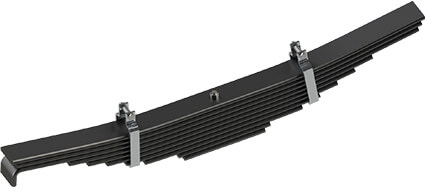
In the world of transportation, where every mile counts, the often-overlooked hero silently working to enhance the journey is the trailer spring. These unassuming components play a pivotal role not just in the safety of cargo but also in the overall comfort of the ride. Let’s embark on a journey of understanding, evaluating the profound impact that trailer springs have on ride comfort.
Understanding Trailer Springs:
At the core of a trailer’s suspension system lies the humble trailer spring. These resilient componentscarry the weight of the cargo, acting as the buffer between the ruggedness of the road and the precious load they bear. With various types available, such as leaf springs and coil springs, eachcontributes unique characteristics that significantly influence the quality of the ride.
Factors Influencing Ride Comfort:
Spring Type and Design:
Trailer springs are not a one-size-fits-all solution. Whether they are leaf springs or coil springs, the design intricacies play a crucial role in how they respond to the unpredictable terrain.
Load Capacity:
The delicate balance between load capacity and ride comfort is a dance every trailer spring must perform. Striking this equilibrium ensures a journey that is smooth, stable, and devoid of unnecessary jolts.
Damping Characteristics:
Collaborating with shock absorbers, trailer springs mitigate vibrations and shocks. Understanding these damping characteristics provides insights into the level of comfort a trailer’s suspension system can deliver.
Impact of Trailer Springs on Road Handling:
Stability and Control:
A well-engineered trailer spring significantly contributes to the stability and control of a trailer. We’ll explore how these components influence handling, especially during challenging maneuvers.
Traction and Braking:
Traction and braking efficiency are not just about tires. The interplay between trailer springs and these critical aspects of road handling is an integral part of evaluating the overall ride experience.
The Human Element:
Driver and Passenger Comfort:
Beyond the cargo, the condition of trailer springs directly affects the comfort experienced by the driver and passengers. A smoother ride not only enhances the overall journey but also minimizes fatigue.
Reducing Fatigue:
Long-haul truckers spend hours on the road. We’ll delve into the correlation between ride comfort and driver fatigue, emphasizing the importance of comfortable journeys for those who navigate the highways.
Maintenance and Longevity:
Preventive Measures:
Proactive maintenance practices are the key to ensuring optimal performance and longevity of trailer springs. Regular inspections and care routines can prevent issues that may compromise ride comfort.
Signs of Wear and Tear:
Identifying common issues such as sagging or unusual noises becomes crucial for trailer owners. Addressing these problems promptly preserves the integrity of the suspension system and maintains ride quality.
In conclusion, the evaluation of the impact of trailer springs on ride comfort is a holistic exploration involving design, maintenance, and the continuous evolution of technology. As the transportation industry progresses, understanding and optimizing these elements become essential for ensuring not just the safety but also the comfort of every journey.In every mile travelled, let’s appreciate the trailer springs silently working to make the ride smoother, safer, and more comfortable for all.
